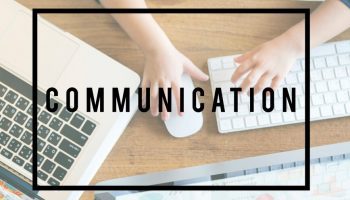The importance of clear and effective cross-cultural communication cannot be overstated in our increasingly globalized world. This is where translation services become invaluable, bridging the gap between languages and cultures.
However, the process of translating text from one language to another comes with its unique set of challenges.
Importance Of Translation
Translation is pivotal in bridging linguistic and cultural barriers, facilitating communication, and fostering mutual understanding among people from different backgrounds.
From literature and diplomacy to business and technology, the importance of translation spans various domains, shaping interactions and how we perceive the world around us.
Facilitating Communication

Translation enables individuals and organizations to communicate effectively across language boundaries, allowing ideas, information, and perspectives to be shared and understood by diverse audiences.
Whether facilitating international trade negotiations, conducting multilingual conferences, or connecting with global audiences through literature and media, translation is a cornerstone of effective communication in a multicultural society.
Preserving Cultural Heritage
Translation is crucial in preserving and promoting cultural heritage by making literary and cultural works accessible to audiences worldwide.
Translators convey the linguistic meaning of texts and capture the nuances, richness, and cultural context inherent in the original language.
Through translation, cultural treasures such as literature, folklore, and historical documents are preserved and celebrated across generations, enriching our collective heritage and fostering appreciation for diverse cultures.
Driving Globalization
Translation fuels the process of globalization by facilitating cross-border interactions, commerce, and collaboration in a global economy.
In an increasingly interconnected world, businesses, governments, and organizations rely on translation services to expand their reach, enter new markets, and engage with international stakeholders.
Translation enables the seamless exchange of ideas, products, and services across linguistic and cultural boundaries, driving innovation, economic growth, and cross-cultural understanding.
Read Also: Future-Proofing Boardroom Practices: Embracing Software Innovation For Long-Term Success
Enhancing Access To Information
Translation plays a vital role in democratizing access to information by making knowledge and resources available in multiple languages.
Translating academic research, educational materials, or government documents ensures that individuals from diverse linguistic backgrounds have equal access to information and resources essential for their personal, professional, and educational development.
Translation also plays a critical role in providing access to healthcare information, legal services, and emergency communications for linguistically diverse communities.
Promoting Multilingualism And Diversity

Translation promotes multilingualism and celebrates linguistic diversity by recognizing the value of all languages and cultures.
By facilitating communication between speakers of different languages, translation fosters respect, tolerance, and appreciation for linguistic diversity.
It encourages individuals to learn and preserve their native languages while promoting foreign language acquisition, cultural exchange, mutual respect, and global citizenship.
Understanding The Challenges Of Translation
Engaging in translation isn’t simply swapping one word for another. It is a complex process with numerous factors at play.
Here are some common challenges associated with language translation:
Literal vs. Idiomatic Meaning
Every language is steeped in its cultural context. This can cause significant issues when a literal translation leads to a loss of the intended meaning. Idiomatic expressions, in particular, can be tricky to translate, as they always have equivalents in other languages.
Syntax and Grammar
Each language follows its unique set of grammar and syntax rules. A syntactical structure that makes perfect sense in one language could be nonsensical or awkward in another, translating a real balancing act.
Cultural Sensitivities
It’s easy for a translator to inadvertently offend a reader if they need to become more familiar with the cultural nuances of the target language. Cultural understanding is paramount to effective translation.
Time Constrain
Translators often work under tight deadlines, especially for urgent or large-scale translation projects, which can pressure the translation’s quality and accuracy.
Translators manage their time effectively, prioritize tasks, and employ efficient workflow strategies to meet deadlines without compromising quality.
They may also use translation memory tools or work in teams to streamline the translation process and optimize productivity.
Maintaining Style And Voice
Translating creative or literary works requires capturing the author’s unique style, tone, and voice while ensuring fidelity to the original text.
Translators carefully balance fidelity to the original text with readability and fluency in the target language. They may use techniques such as transcreation or localization to adapt the text to the target audience while preserving the author’s voice and style.
Finding Solutions To Common Translation Challenges

Despite these challenges, it is entirely possible to produce highly effective translations. Here are a few strategies for overcoming barriers in translation:
- Thorough Linguistic Understanding: Deep knowledge of the language and the culture, conventions, and quirks of the source and target languages is crucial. Mastery of both languages allows the translator to convey the original material effectively.
- Considering the Context: It’s crucial to understand the context in which the text will be used. This allows the translator to make decisions that reflect the needs and expectations of the target audience.
- Use of Advanced Technology: Today, numerous translation tools can help streamline the translation process. However, human supervision is necessary, especially where emotions, cultural nuances, and idiomatic expressions are involved.
Translation takes more than just knowledge of multiple languages; it requires a deep understanding of every text’s cultural nuances and context.
Only then can the magic of words travel across borders, connecting people and cultures. It may be a complex journey, fraught with challenges, but the rewards of pushing through these barriers can be immeasurable.
Partner With Professional Linguists
While technology has made significant strides in translation, human translators are expected to remain crucial in bridging language gaps.
When assessing translation alternatives, it’s essential to determine if the project demands comprehension of nuances like tone, specialized terminology, or cultural disparities.
If such factors are involved, collaborating with professional linguists is likely necessary to attain the desired translation accuracy and quality level.
These linguistic experts possess the necessary skills, cultural awareness, and proficiency to navigate complex linguistic and cultural nuances effectively, ensuring that the translated content resonates authentically with the target audience.
Thus, while technology can aid in certain aspects of translation, the human touch offered by professional linguists remains indispensable for achieving nuanced, culturally sensitive, and high-quality translations.
Read Also:




























